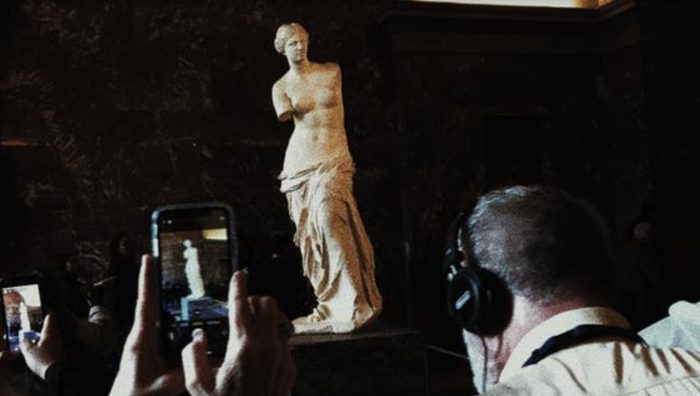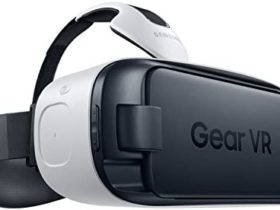They say that a picture is worth a thousand words. However, what about the context of that image? This is how audio accompaniment contributes to museum visitors’ increased appreciation of exhibits and installations.
Audio guides are by no means new to the museum world. Indeed, the concept of offering pre-recorded commentary on exhibitions has been around for as long as portable devices have been, providing visitors with additional information and context.
Originally presented in the form of cassette players – which required listeners to occasionally turn the tape in order to obtain all essential information – audio guides are today more compact, user-friendly, and customized than ever before. Whether through a smartphone app or a specific MP3 player hired by the museum for the duration of a visit, accessing critical knowledge has never been easier.
Thousands of museum visitors rely on audio tours each year, but with a new wave of creative technology finding its way into museums, should we be concerned that audio is becoming obsolete? Is the simple audio tape facing an existential crisis as a result of the introduction of the smartphone and mobile device?
No.
To be sure, we may have bid farewell to the cassette medium, but not to the auditory experience. Whether it’s overcoming language hurdles or assisting people in learning without relying on signs and information boards, audio guides remain popular – possibly even more so now that we live in the podcast era.
Institutions, on the other hand, are providing additional value to the typical audio guide by developing enhanced audio or “creative audio guides.”
The Rise Of The Creative Audio Guide
By utilizing storytelling, innovative audio guides provide a unique and fascinating narrative for the listener to follow. This story is specific to a particular institution or, in certain cases, an individual show, guaranteeing a consistent emphasis and message.
Graham Davies, Digital Programmes Manager at Amgueddfa Cymru – National Museum of Wales, explains that the museum does not presently provide “conventional audio tours,” preferring instead to utilize “more dynamic and agile” audio approaches to “complement its art exhibits.”
The most effective examples of creative audio guides are created by seasoned production teams that bring together a variety of aspects such as skilled voice actors, translators, sound editors, and archivists to produce a memorable and compelling result for the target audience. By taking the effort to identify and personalize information to the proper audience, guide makers can satisfy the needs of everyone from youngsters to history buffs to art specialists.
Percy Jackson: Bringing History To Modern Ears
The Demigods, A Villa Audio Tour from the World of Percy Jackson, a 2018 exhibition at the Getty Villa in Malibu, California, is a great example of a successful creative audio guide.
Inspired by the enormously popular Percy Jackson book series – in which a dyslexic twelve-year-old boy discovers his father is the Greek sea god Poseidon and is sent to a demigod training camp – the audio tour allowed fans of the books to embark on their own personal quest through the Getty Villa: a museum dedicated to the arts and cultures of the ancient Mediterranean world.
The museum houses over 44,000 Greek, Roman, and Etruscan artifacts, and the guide assisted listeners in meeting heroes, avoiding hostile gods and monsters, and, of course, learning about and interacting with their surroundings.
This innovative audio guide was a success because the story was perfectly matched to both the source material and the surrounding environment. By incorporating historical artifacts into an exciting fictional story and quest, visitors (especially youngsters) were able to learn about the exhibitions in an entertaining and engaging manner.
Their choices and responses throughout the exhibition influenced the guide’s story’s ending (which god or goddess is their parent), offering them a unique, personalized museum experience that embraced their passions. – Learn more about this project in this MuseumNext presentation.
How Have Audio Guides With A Creative Bent Been Implemented?
The National Trust for Scotland manages the Culloden Battlefield Visitor Centre in the Scottish Highlands. It is a museum dedicated to one of the bloodiest and most significant battles in British history. It was here when the Jacobites attacked the Duke of Cumberland’s government soldiers in April 1746. 1600 persons were killed in the ensuing slaughter, 1500 of them were Jacobites.
The visitor center, which stands next to the battlefield, exhibits artifacts from both forces as well as interactive displays that help keep the battle’s legacy alive. Additionally, it has an innovative audio guide that incorporates professional voice actors, period folk tunes, and scripts written by renowned military historians to accompany visitors around the field and monuments, providing an emotional (not to mention historical) context for the site.
The exhibition’s creators explain that their audio guide is critical in “better-engaging families and international visitors” and in creating a “strong narrative.” To do this, they “created scripts for Adult and Family tours, which were also translated into a variety of other languages.” Over 300 gadgets are repaired and maintained completely.”
Similarly, the British Museum attempted to update its current audio tour in 2014 in order to appeal to a larger audience. The new tour, which is available in 10 languages and is used by approximately 160,000 people each year, is extremely customizable, taking into consideration the amount of time the listener has in the museum and how they choose to explore the exhibits.
Visitors can select between an hour-long tour of the institution’s most popular collections and a thematic tour tailored to their interests. The guide records what the visitor sees and makes a digital keepsake from the museum’s 220 pieces on exhibit. They may then send this keepsake to themselves once the tour concludes – an added touch that enables visitors to not only create memories but also revisit them.
What Factors Contribute To The Success Of A Creative Audio Guide?
Before they began redesigning its audio guide, the British Museum conducted a study into the behaviors of all of its visitors, not just those who used audio guides, to ascertain why some chose audio guides and others did not. The findings were rather intriguing.
Their research revealed that visitors desire the flexibility to explore a museum in their own way and at their own pace. This means that any effective creative audio tour must be adaptable, which the British Museum and the Percy Jackson guide do. Even though an audio tour adds structure to the visitor experience, that framework should allow for flexibility. A user cannot feel as though they are a key character in a tale if they have no control over the story’s ending.
After many prototypes and 250 test visitors, the outcome has proven to be enormously popular at the British Museum.
One of the fundamental conclusions from the British Museum – and one shared by institutions worldwide – is that entertaining visitors is just as important as teaching them. By appealing to a person’s emotions, acquiring information for the sake of knowing becomes all the more exciting. Indeed, in many instances, learning and memory consolidation is enhanced when conveyed via entertainment.











Leave a Reply